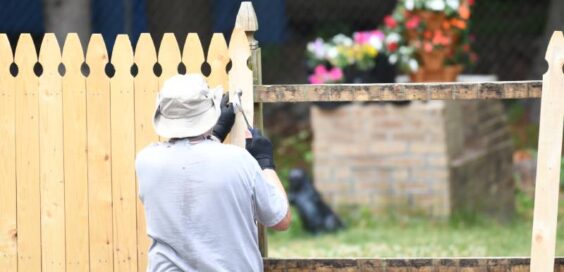What To Know Before Installing a New Home Fence
Written by SayBuild-admin // September 19, 2024 // Home Improvement // Comments Off on What To Know Before Installing a New Home Fence

Installing a new home fence is an investment that requires careful planning and consideration. Understanding a few key factors about residential fencing before you start the installation process is necessary for a successful project, whether you want to enhance your home’s privacy, boost its curb appeal, or keep pets and children safe.
Assess Your Needs and Budget
Take time to evaluate your specific needs before diving into the installation process. What to know before installing a new home fence begins with understanding the fence’s purpose.
Do you want to create a private space in your backyard, or do you need a sturdy barrier to keep your pets secure? The fence’s purpose will influence the type of materials and design you choose.
Next, consider your budget. Fencing materials vary in cost, and so does the installation process. Wooden fences, for instance, offer a classic look but may require more maintenance, while vinyl fences are more durable but come at a higher price point.
Local Regulations and Property Lines
Research local zoning laws and regulations before installing your fence. Many municipalities have specific rules regarding fence height, materials, and placement.
Some areas may require permits, so checking with your local government is crucial to avoid any legal issues. Knowing what to do before installing a new home fence also includes knowing your property lines.
Installing a fence on your neighbor’s property can lead to disputes and potential legal action. Obtain a survey of your property or consult a professional to avoid this issue and ensure you install the fence within your boundaries.
Choose the Right Materials
Your choice of materials depends on factors such as climate, maintenance requirements, and aesthetic preferences. Wood, vinyl, aluminum, and chain-link are popular options, each with its pros and cons.
Wood offers a natural look and you can paint or stain it to match your home, but regular maintenance is necessary to prevent deterioration. On the other hand, vinyl fences are low-maintenance and resistant to weathering, making them ideal for homeowners who prefer a hassle-free option.
Consider the long-term durability and how the fencing material you choose will stand up to your local weather conditions. Opt for a more durable material, such as vinyl or aluminum, if you live in an area with heavy winds or frequent storms.
Installation Preparation
After selecting the right materials and ensuring compliance with local regulations, it’s time to prepare for installation. This stage involves clearing the area where the fence will go, marking the boundaries, and verifying the ground is level. Proper preparation prevents common installation issues, such as uneven fencing or misaligned posts.
Know your best available options if you need specialized equipment, such as augers, to dig post holes. Familiarize yourself with augers before purchasing to help you make an informed decision.
Long-Term Maintenance
After installing your fence, ongoing maintenance will ensure it stays in good condition for years. Different materials require different levels of care. Wood fences, for example, may need periodic staining or sealing to protect against moisture and pests. Vinyl and aluminum fences, on the other hand, require less maintenance, but you should still regularly inspect them for any signs of damage or wear.
Image Credentials:By nd700, 365971037








 If you want to contribute tutorials, news or other money-related stuff:
If you want to contribute tutorials, news or other money-related stuff:  Share our home building library with your facebook friends:
Share our home building library with your facebook friends:  Do you have any ideas or suggestions you would like to make?
Do you have any ideas or suggestions you would like to make?  If you like what we do, please subscribe to our
If you like what we do, please subscribe to our  All content Copyright © 2012 SayBuild. Part of nBuy Home Management Network.
All content Copyright © 2012 SayBuild. Part of nBuy Home Management Network.